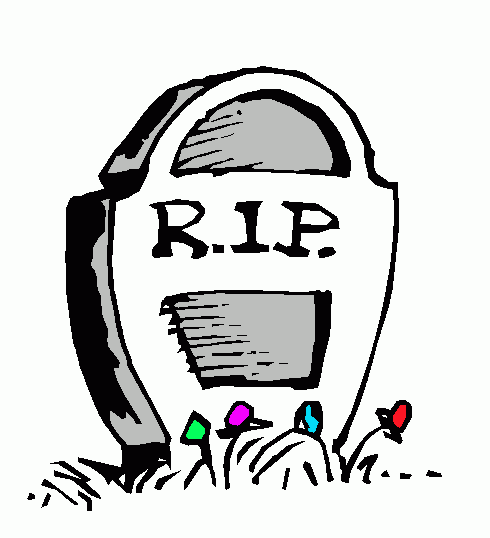brand obituaries
I’m working with a client to develop a new brand platform and thought I’d share one of the tools I used in my engagement – Brand Obituaries.
the background
The client lacks a clear brand identity and their brand seems “forgettable.” The problem is not that they don’t have good products – it’s that they no longer know what they stand for, and so neither do consumers.
The first step in my engagement was a Discovery — a diagnostic evaluation to assess the current performance of and future opportunities for the brand. As a matter of course, I conducted stakeholder interviews to learn (among other things) individual perceptions and beliefs about what the brand currently stands for and aspirations of what they want it to stand for.
Although this process was helpful, I found people were more likely to define the brand by what it isn’t, as opposed to what it is, or could be. As such, I wanted to generate more perspectives about the potential identity for the brand.
the objective
I decided I needed to do something in the first project team worksession to spark a dialogue about the brand’s “reason for being” – generating rich discussion and revealing points of consensus and disagreement – which I could use as inputs to our work on crafting a new brand platform.
I often use projective techniques in consumer qualitative research in order to uncover underlying attitudes and beliefs. They also help less-verbal people articulate their ideas. I decided to use such a tool with the project team.
the process
Prior to the worksession, I asked the participants to complete the assignment described in “the tool” section below.
During the worksession, I divided the group into small groups and asked them to share their completed assignments with each other — and then to incorporate the best of each into a composite to share with the large group.
the tool
People were asked to write a Brand Obituary:
Think about the brand as a person – not necessarily the type of customer that shops at the brand, but rather the type of person the brand would be if it came to life.
Also think about the brand today when it’s at its best – not some idealized future – and think about it as a whole – all that the brand entails.
Pretend that upon waking today, you learn that the person “the brand” has passed away. As a reporter for the local newspaper, your job is to write an obituary for the brand as if it were an actual person who has died. Please jot/type your thoughts in the space provided below.
In doing so, think about describing the salient points of the brand’s life, as well what is different now that the brand is gone.
Some of the type of things you should include are:
- the cause of death – given how the brand is “living” today, what might be the reason he/she would die? Was his/her death unexpected? Did anyone (competitors or trends) contribute to his/her demise?
- who/what the brand left behind – who will mourn or miss the brand – and why?
- what was the brand’s biggest accomplishment in life? What will he/she be remembered for?
- what lessons can be learned from the brand’s life? – and from his/her death?
- who will take the brand’s place now that the brand is gone?
the outcome
This exercise was a real success on several different fronts:
1. Participation in the assignment – Given that the project team is comprised mostly of the company’s executive team, including the CEO, CFO, and head merchant, I wasn’t sure how much cooperation I would get with a “homework” assignment. But I was pleasantly surprised that 12 out of the 14 participants completed the assignment and it was clear many of them had spent a lot of time on it.
2. Tone – I was also a little concerned that I was asking people to think about something quite unpleasant – the brand’s death. I even included a note on the assignment to offset any potential negativity:
“Please note this is intended to be a fun exercise, to get you thinking out of the box. Although the approach seems to come from a negative place, the results will be quite positive!”
This turned out to be a non-issue. People did indeed have fun with the exercise — some of the obituaries were quite creatively written and the small groups had animated discussions, sometimes punctuated with laughter.
3. Participation in the discussion — The exercise seemed to break the ice and get people really talking. After engaging with each other over the obituaries, the participants seemed more willing to speak up and speak openly. As one person explained to me in a follow-up note, “Exercises outside of our normal routine can and should serve as important learning experiences that are fun.”
4. Group buy-in — Some of the issues revealed by the obituaries were the same as those that I had presented as having learned from my stakeholder interviews – but they seemed much more powerful and persuasive coming from the participants. Actually I think the exercise gave my assessment and recommendations more credibility because many of my points were reinforced by the obituary outcomes.
5. Rich insights – Above all else, the tool accomplished its objectives. From the reactions in the small and large group discussions, it was obvious that the obituaries revealed thoughts that people had not shared with others before. People were surprised to learn what others really thought about the brand – and in some cases, I suspect, they aren’t aware of all they had thought or communicated themselves.
I definitely have rich fodder from which to craft a “strawman” brand identity for our next worksession!
Let me know if you’re interested in learning more about this tool or other approaches I use in my Discovery process.
related posts: